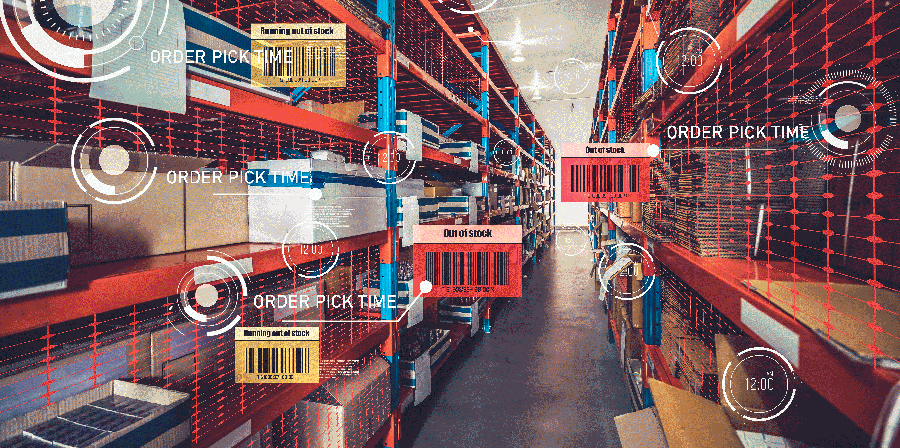In the fast-paced world of retail, supply chain optimization is a game-changer. It's the backbone that keeps operations running smoothly.
But what does it entail? It's about making the process of moving goods from supplier to customer as efficient as possible. It's about reducing costs, improving speed, and enhancing customer satisfaction.
One key aspect is parcel shipping optimization. This involves finding the most cost-effective and efficient ways to deliver parcels to customers. It's a complex task, but when done right, it can significantly boost a retailer's bottom line.
Another crucial element is scalability. As a business grows, its supply chain needs to grow with it. Scalable solutions are those that can adapt and expand to meet changing demands.
In this comprehensive guide, we'll delve into these topics and more. We'll explore strategies for optimizing your retail supply chain, with a focus on parcel shipping and scalability. Whether you're a retail business owner, a supply chain manager, or just interested in the subject, you'll find valuable insights here.
Understanding Retail Supply Chain Optimization
Retail supply chain optimization is a broad concept. It involves a range of strategies aimed at improving the efficiency and effectiveness of the retail supply chain.
The goal is to ensure that the right products reach the right customers at the right time. It's about balancing supply and demand, managing inventory, and coordinating logistics.
Key Aspects of Retail Supply Chain Optimization Include:
- Parcel shipping optimization
- Multi-modal transportation
- Last mile delivery
- Delivery solutions
- Scalable supply chain
- Logistics strategy
- Parcel rates
Each of these elements plays a crucial role in the overall supply chain process. For instance, parcel shipping optimization can help reduce shipping costs and improve delivery times.
Similarly, a scalable supply chain allows a business to adapt to changing market conditions. It can expand or contract as needed, ensuring that the business can meet customer demand without overstocking or running out of products.
In the following sections, we'll delve deeper into these aspects of retail supply chain optimization. We'll provide actionable insights to help you improve your supply chain operations and boost your business performance.
The Impact of Parcel Shipping on Supply Chain Efficiency
Parcel shipping is a critical component of the retail supply chain. It directly affects how quickly and efficiently products reach customers.
Optimizing parcel shipping can lead to significant improvements in supply chain efficiency. It can reduce delivery times, lower shipping costs, and enhance customer satisfaction.
One way to optimize parcel shipping is through the use of advanced tracking systems. These systems provide real-time information about the location and status of shipments. This transparency can help businesses manage their inventory more effectively and respond quickly to any delivery issues.
In addition, negotiating better parcel rates with carriers can also contribute to supply chain efficiency. Lower shipping costs can lead to higher profit margins, making the business more competitive.
Strategies for Scalable Supply Chain Solutions
Scalability is a key factor in retail supply chain optimization. A scalable supply chain can adapt and grow with the business, meeting increasing demand without compromising efficiency or customer satisfaction.
One strategy for achieving scalability is through the use of technology. Advanced systems like AI and machine learning can automate and streamline various supply chain processes. This can increase efficiency and allow the business to handle larger volumes of orders.
Another strategy is to build strong relationships with suppliers and carriers. Collaborative partnerships can provide more flexibility and support growth. For instance, a reliable carrier can offer more shipping options as the business expands.
Lastly, a scalable supply chain requires effective inventory management. Automated systems can help track inventory levels in real-time, preventing stockouts or overstocking. This ensures that the business can meet customer demand at all times, regardless of its scale.
Customer-Centric Supply Chain: The Key to Loyalty
In today's competitive retail landscape, a customer-centric supply chain is crucial. This approach puts the customer at the heart of all supply chain decisions, aiming to enhance their shopping experience and foster loyalty.
One way to achieve this is through real-time tracking. Customers appreciate transparency in their orders, and real-time tracking allows them to know exactly when to expect their delivery. This not only improves customer satisfaction but also builds trust.
Another aspect of a customer-centric supply chain is efficient handling of returns. A robust reverse logistics strategy can ensure that returns are processed quickly and efficiently, maintaining customer trust and satisfaction.
Lastly, customer feedback should be integral to refining supply chain strategies. Listening to customers' needs and preferences can provide valuable insights for improving the supply chain, ultimately leading to higher customer loyalty.
Navigating Last Mile Delivery Challenges
Last mile delivery, the final step in the supply chain, often presents the most challenges. It's a critical component of customer satisfaction, but it can be fraught with inefficiencies.
One common issue is the high cost of last mile delivery. This is often due to the dispersed nature of delivery points, leading to increased fuel and labor costs. Strategies to mitigate these costs include leveraging local distribution centers and using electric vehicles for sustainability and cost-efficiency.
Last Mile Delivery Challenges
Another challenge is meeting customer expectations for fast delivery. With the rise of e-commerce, consumers increasingly expect same-day or next-day delivery. Retailers can address this by using predictive analytics for demand forecasting, enabling them to better plan their delivery routes and schedules.
Finally, urbanization presents its own set of challenges for last mile delivery. High traffic and limited parking can lead to delays. Retailers can adapt by exploring alternative delivery solutions, such as drones or autonomous vehicles.

Mitigating the Effects of Parcel Rate Increases
Parcel rate increases can significantly impact a retailer's profit margins. These increases can be due to a variety of factors, including fuel costs, labor costs, and changes in carrier rates.
One strategy to mitigate the effects of parcel rate increases is to negotiate better rates with carriers. This can be achieved by demonstrating a consistent volume of shipments, or by offering to use a carrier's services exclusively.
Another strategy is to optimize packaging. By reducing the size and weight of packages, retailers can often lower their shipping costs. This also has the added benefit of being more environmentally friendly.
Finally, retailers can consider outsourcing their logistics to a third-party provider. These providers often have the scale and expertise to secure better rates and more efficient shipping processes.
Multi-Modal Transportation: Flexibility in Shipping
Multi-modal transportation is a strategy that uses different modes of transport within a single supply chain. This approach can enhance flexibility and efficiency in shipping.
By using a combination of air, sea, rail, and road transport, retailers can optimize their shipping routes. This can help to reduce costs, improve delivery times, and increase the resilience of the supply chain.
However, managing multi-modal transportation can be complex. It requires careful planning and coordination, as well as a deep understanding of international shipping regulations and customs procedures.
Despite these challenges, the benefits of multi-modal transportation are significant. By adopting this approach, retailers can create a more flexible and robust supply chain, capable of adapting to changes in demand, supply, and market conditions.
Reverse Logistics and Efficient Return Policies
Reverse logistics is the process of managing the return of goods from customers back to the retailer. It's a critical aspect of retail supply chain optimization.
An efficient reverse logistics strategy can help to reduce costs, improve customer satisfaction, and enhance the retailer's reputation. It involves managing returns, processing refunds, and handling damaged or defective goods.
However, creating an efficient return policy can be challenging. Retailers must balance the need to satisfy customers with the costs of handling returns. This requires a clear understanding of customer expectations, as well as a robust system for managing and processing returns.
By focusing on reverse logistics and efficient return policies, retailers can turn a potential challenge into a competitive advantage. This can lead to increased customer loyalty, improved profit margins, and a more sustainable business model.
The Role of Third-Party Logistics (3PL) Providers in Retail Supply Chains
In the dynamic world of retail, third-party logistics (3PL) providers, exemplified by Jillamy, are crucial allies in the pursuit of supply chain optimization. These entities seamlessly integrate with retailers, offering scalable solutions tailored to businesses of all sizes. Whether managing sudden surges in demand or facilitating expansions into new markets, 3PL providers excel in scalability, drawing upon their extensive network and resources to adapt without imposing significant upfront costs on retailers.
At the core of their services lies a commitment to cutting-edge technology. Through the utilization of advanced systems and automation, 3PL providers ensure swift and efficient service across the supply chain spectrum, from order processing to last-mile delivery. Moreover, they enrich the customer experience by offering value-added services like personalized packaging, thus elevating satisfaction levels and fostering enduring brand loyalty.
Addressing the multifaceted challenges faced by retailers, 3PL providers play a pivotal role in optimizing inventory management and navigating the complexities of last-mile delivery. By leveraging innovative solutions such as predictive analytics and alternative delivery methods, they ensure timely delivery while minimizing costs and upholding sustainability standards. Furthermore, they actively mitigate the impacts of parcel rate increases, utilizing their negotiating prowess to secure competitive shipping rates and optimize packaging strategies.
Dwayne Shakespeare, Vice President of Jillamy Fulfillment Services, underscores their success: "With our proprietary software and dimensional algorithms, coupled with our tech-stack, Jillamy has achieved remarkable results. We've saved our largest customer nearly 12% in dimensional freight weight costs while maximizing storage efficiencies to ensure inventory meets customer demand for speed to market."
In conclusion, the indispensable role of third-party logistics providers like Jillamy in scalable retail supply chains cannot be overstated. Their expertise, technological prowess, and unwavering commitment to customer satisfaction empower retailers to navigate the intricacies of the modern retail landscape with confidence, ensuring sustained success and competitiveness.
Conclusion: The Future of Retail Supply Chains
The future of retail supply chains is set to be shaped by several key trends. These include the continued growth of e-commerce, the increasing importance of sustainability, and the rise of new technologies.
E-commerce growth is driving the need for more efficient and flexible supply chains. Retailers must adapt to meet the demands of online shoppers, who expect fast, reliable, and affordable delivery. This will require ongoing optimization of parcel shipping and last mile delivery processes.
Sustainability is also becoming a key consideration. Retailers are under pressure to reduce their environmental impact, which will require changes to packaging, shipping, and return policies. At the same time, new technologies such as AI, machine learning, and blockchain are set to revolutionize supply chain management.
In conclusion, retail supply chain optimization is a complex but essential task. By focusing on parcel shipping optimization, scalable solutions, and customer-centric practices, retailers can navigate the challenges ahead and secure their place in the future of retail.
Ready to optimize your retail supply chain with Jillamy's expertise? Contact us today to discover how our innovative solutions can propel your business forward in 2024 and beyond. Let's navigate the complexities of modern commerce together and unlock new opportunities for growth and success.


